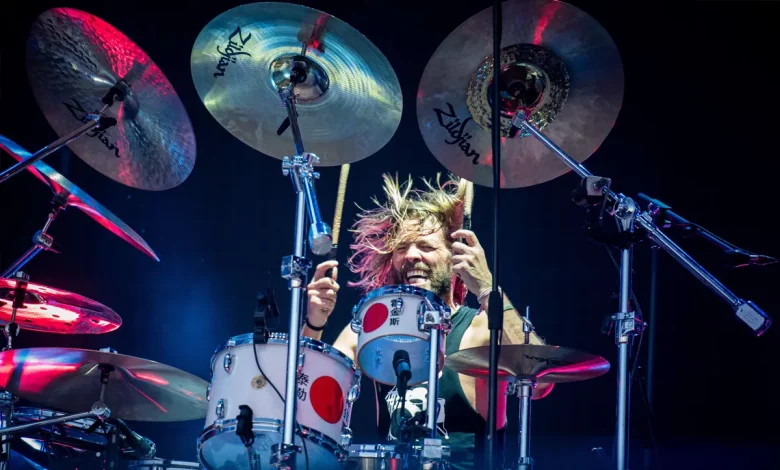
Are you a professional drummer or an aspiring drummer? If you are, I have good news. Percussionists have been scientifically proven to be uber-smart, calm, athletic, and all-around experts at controlling their bodies.
That being said, many of these studies have shown that the benefits of drumming are most noticeable in those who practice 10 hours or more a week. So, if you aren’t going to keep reading this article, then at least sit down at your kit!
Today, we’re going to explore ten facts unique to drums drummers. Five facts are about drummers, and the other five are about drums. Read on if you dare to find out how cool you (and your chosen instrument) are.

Drummers’ Motor Skills are Unmatched
Drummers have been proven to have excellent fine motor and gross motor skills. Fine motor skills are the small movements we make with our fingers, wrists, and hands. As we grew from young children to adults, our fine motor skills aided our intellectual development.
But scientists have been learning that those skills can be further honed in adulting while performing hobbies, such as painting or drumming. But drummers work on two motor skills at the same time. So most people who have yet to experience drumming can’t perform fine and gross motor skills with the same degree of separation!
Gross motor skills are larger movements, such as those made by our limbs. Drummers have been found to have better reaction times and more exacting motor skills than non-drummers.
While studies done on pianists show similar results in the fine motor skills department, drumming requires far more gross motor movement, which strengthens different areas.
Their Brains are more Symmetrical
Speaking of areas of the brain, when it comes to the primary motor cortex, drummers’ brains are more symmetrical than non-drummers brains. If you play drums for long enough, the very structure of your brain will change. Drummers’ brains are surprisingly less active while performing than non-drummers. This is because their brains are more efficient (Read this article on Psychology Today to learn more).
The Hemispheres of their Brains are Better Connected
According to a study done for Brain and Behavior, drummers have more dense cables connecting the two hemispheres of the brain than most people. But interestingly enough, they also have fewer cables in their corpus callosum. (The corpus callosum is the proper name for the part that connects the two sides of your brain, which helps to send signals between hemispheres).
And (despite my sassy introduction), your brain is still unique even if you are a hobbyist drummer. For example, one study showed that eight weeks of participation in a drum circle strengthened the connection between hemispheres.
Although, stating that your brain is ‘better connected’ than others is not well received. Here’s one last brainy fact about drummers before I move on to the other points.
Drummers are more Neuroplastic Than Most
All of the above changes in drummers’ brains lead to more neuroplasticity. Neuroplasticity is the ability for new growth and connections to form. Musicians are known for having neuroplastic brains.
An article in Nature Journal describes drumming as not just ‘making music’ but ‘Demanding multi-modular motor training.’ A study posted in Oxford Academic’s 27th volume showed that pro drummers’ resting brains were more neuroplastic than most because of the gross motor movement required.
Since all this stuff on the brain is interconnected, I’ll move on to something else now.
Drummers are Calmer
Here’s another thing not to say to your friends. “I’m calmer than you because I’m a drummer!”
While many people have an image of a wild percussionist sweating and yelling on stage, it’s proven that drummers are calmer. Studies have shown drummers to be less hyperactive than their non-musical counterparts. Drumming also has calming effects on neurodivergent, such as those with ADHD and autism.

Rock Drummers are Athletes; Drumming is a Sport
According to studies done by sports scientists such as Steve Draper, percussionists have physical stamina equal to top-tier athletes. But, to quote Eric Neira, “I mean, you get off that stage, and your underwear is wet.” Welp, that’s my 1-gross-quote-per-day quota.
Drummers in other genres don’t always have heart rates that pump quite as fast as rock drummers, but it’s still physically demanding work.
Drummers Partake in Therapy
And while it might not be the same as sitting in a therapist’s chair, drumming is therapeutic. There’s a reason drumming is used in ceremonies, spiritual workshops, and zen Buddhist liturgy, and hand percussion is one of the most commonly used tools in a music therapist’ toolbox.
Drumming is partaking in physical therapy, too. According to Dr. Barry B. Bittman, drumming can even boost your immunity.
“…(drumming) demonstrates statistically significant boosts in cell-mediated immune function associated with group drumming facilitated by a music therapist. “(Rhythmresources.net) -Dr. Barry Bittman MD
Drums are Archaic Instruments
Aside from electronic kits, the drum concept has stayed the same for thousands of years. While the first drums were made of alligator skin rather than cowhide or synthetic material, the idea of the drum is still the same.
According to this article in Drum Magazine, the oldest drum ever found was from 5500 BC China. In the same article, I learned that snare and bass drums are hundreds of years old / from the 1300-1400s.
That’s all to say that drumming has been around for a long time. Drummers and flutists both play on iterations of ancients instrument. (Sorry, drummers…the oldest instrument ever found was the Neanderthal flute. But drums are likely the next instrument to have been made.).

Drums and Drummers are Found in Every Culture
Similarly, drumming can be found in music from every culture worldwide. From the steel pans of Trinidad to the dough-topped tabla from India and all the cultures in between, drumming is universal.
As a principal, drummers are raw and authentic — Primal in a beautiful, ancient way. Their craft represents the world’s heartbeat and is the sound we move our bodies to. It’s one of the biggest reasons why drummers are so unique.
Drums are the Most Important Building Block of the Band
While some may disagree with me, the drummer is the most critical part of the band. You might be thinking, “But why would you put this in a listicle about facts about drummers, Aleah?” Well, there’s some evidence to back me up.
When you enter the studio, the drummer lays down the first track. Since the beat is the basis of the entire song, everyone else has to match up to them. While the lead singer usually gets most of the attention, never forget that none would happen without a percussionist. They keep everything together.
The Biggest Drum Kit Has Over 800 Pieces
Dr. Mark Temperato once made a drum kit with 340 total pieces, which weighed over 5,000 pounds (2 tons!) and took hours for four people to set up. In 2014, it was expanded to over 800 pieces. Who knows how big it is now! I want to know how many people it takes to play it.
We Owe a Lot to the Crusades
While drums and percussion can be found virtually everywhere throughout space and time (Well, maybe not the space part), it’s important to note that much of the drums’ spread has to do with Mediterranean trade routes opening up around 1200 AD. So we owe a lot to the people of this time!
Snare drums might only have spread because of the events during this era. Crusaders took on the military drums they saw during their travels, which began the practice of using military drums in Europe.
Trade routes also widened during the crusades, allowing different kinds of percussion to spread from one place to another, such as between Nothern Africa and Europe. This allowed different cultures access to exotic instruments from other continents and countries.
More Facts About Drums and Drummers
Haven’t learned enough yet?! Here are a few more juicy drum facts before I peace out.
- The oldest recorded history of a drum was from 7500
- Drums have been used for long-distance communication since ancient Africa
- The first drum ever found has been dubbed “The alligator drum” for its alligator skin
- The most expensive drum set to ever sell once belonged to Ringo Starr
- Monkeys drum to communicate, and we may get drumming from monkeys originally
- The fastest drummer so far played at 2,370 beats per minute (39.5 beats per second!)
- The first electronic kit came about in the 1970s
Conclusion: Drummers are One-of-a-Kind
Drummers- You are more unique than you think! From having strong neural processing to some of the best fine motor skills ever studied, you should be proud to be a percussionist. Your instrument is essential to humanity.



